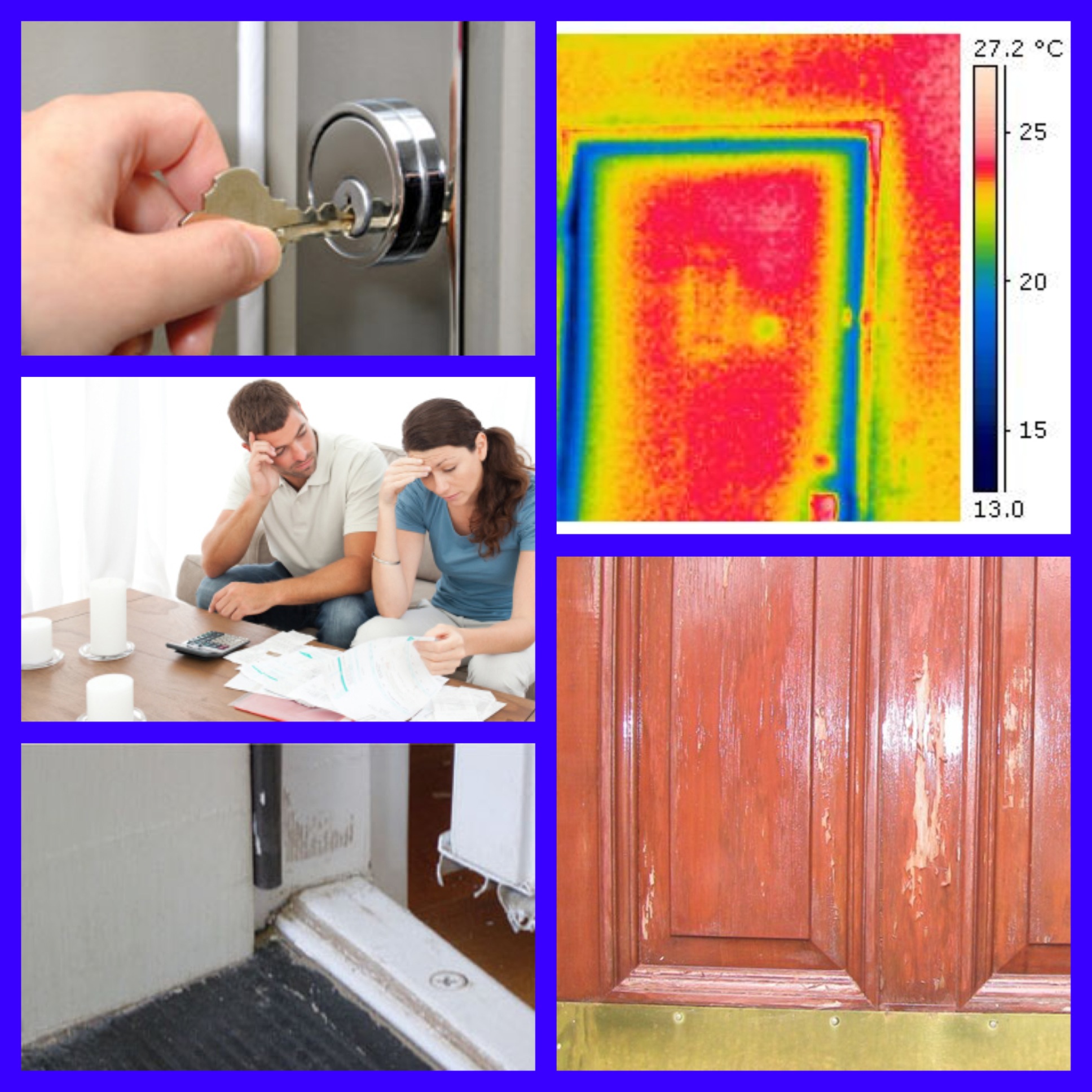This is the last blog in the series Winterizing Your Home: Your Thermal Envelope. So far we’ve focused on roofing, windows and now we’ll look at doors. We get this question many, many times. How do I know if I need to replace my door? Besides being fade resistant and maintenance free (never paint again) this winter you need to focus on energy savings. Here are some telltale signs that you’re throwing your money out the door and what you can do to help reduce energy costs this winter.
When checking your doors, make sure you check:
- Interior And Exterior Finishes Around Your Doors: Is the paint or stain flaking and peeling? Does water penetration cause any cracking or deterioration in the wood? Are any surfaces discolored?
- WHY? Discolored wood around a door might actually be caused by moisture entering the house some distance away.
- Check The Locking Mechanisms: Do they feel loose or don’t work smoothly? Can you actually lock your door?
- WHY? Locks are not only crucial for safety and keep out potential intruders, but they hold doors tightly to lock out drafts, rain, wind, snow, and insects.
- How Does The Caulking Look? Pay particular attention to areas susceptible to punishment from rain, water and extreme sunlight.
- WHY? Caulking can aid in reducing air leakage.
- Do You Have High Energy Bills? If your old drafty door is not energy-efficient your furnace will work harder.
- WHY? Inefficient windows & doors make your furnace work harder to make up for the heat loss.
- Look For Signs Of Air Leakage Around The Door: a ¼” gap around a door can equal a 6” whole (a brick size) in your wall.
- WHY? Improperly installed doors can not only decrease energy efficiency, but can allow unwanted moisture into your home.
What Can You Do?
- Check tracks for dirt, sand, leaves, insects, or pine needles and clean them using a soft brush. Debris reduces door performance and weakens the air-tight seal.
- Look at the weather stripping around all doors and windows and replace portions that are ripped.
- Check around the door for air leaks. If you find any, contact us to assess for energy loss. Inefficient doors and windows can raise energy bills by 40%. That’s no way to stay warm and cozy this winter.
- You can reduce heating costs by replacing your windows and doors with Low-E insulating, double- or triple-pane glass ENERGY STAR® qualified products.

After you assess your door and perform these draft-stopping projects on your own, call me if you have any questions. We are here to help educate you on the best ways you can sit back and enjoy that extra warm feeling that only comes from saving on your energy bills. View our energy efficient door products.




